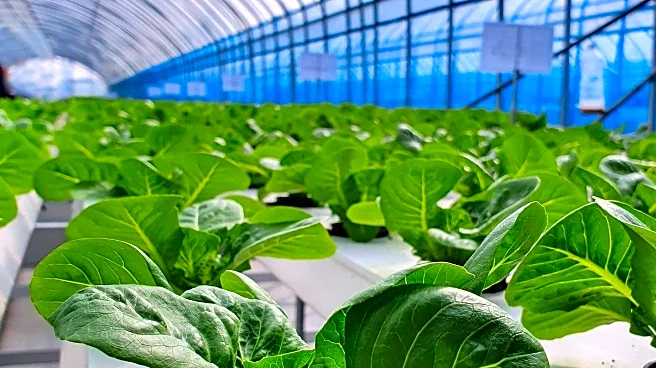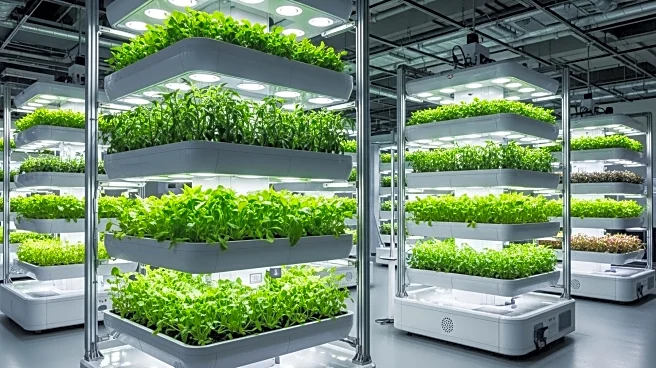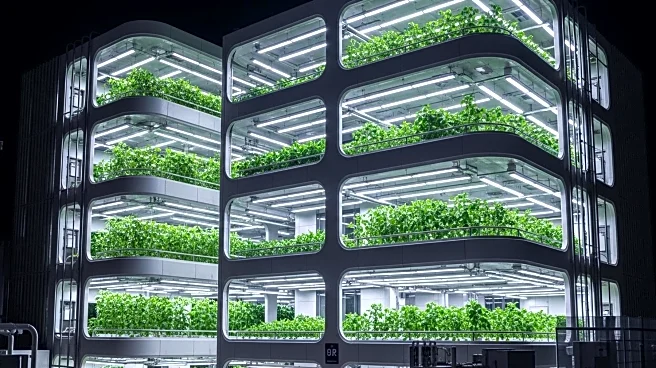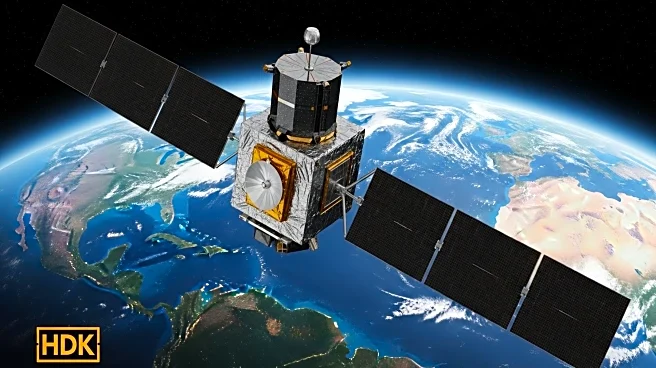What's Happening?
The Food and Agriculture Organization of the United Nations (FAO) is actively addressing food insecurity in urban areas through vertical farming. This innovative method involves growing crops in stacked layers indoors, which conserves land and water while providing fresh produce to urban populations. Experts from the FAO, Guido Santini and João Intini, highlight the importance of reshaping food systems to tackle challenges such as climate change, socioeconomic instability, and migration. Vertical farming is seen as a promising strategy, especially in land-scarce cities, where public spaces can be transformed into productive gardens. Initiatives in cities like Peñaflor, Chile, and Maricá, Brazil, have successfully turned public areas into community gardens, enhancing food security and social ties.
Why It's Important?
Vertical farming offers a sustainable solution to urban food insecurity, which affects approximately 1.7 billion people globally. By utilizing public spaces for food production, cities can improve access to fresh and nutritious food, particularly for vulnerable communities. This approach not only addresses food scarcity but also strengthens community resilience and social networks. The FAO's emphasis on integrating technological innovations with governance models highlights the need for coordinated efforts among producers, vendors, and consumers. As urban populations continue to grow, vertical farming could play a crucial role in ensuring food security and promoting sustainable urban development.
What's Next?
Scaling up vertical farming in urban agriculture requires government support and adequate infrastructure. Local authorities are encouraged to prioritize urban agriculture in public policies, as seen in successful examples from Bolivia, Brazil, and Colombia. These programs connect community production to school meals and local markets, fostering sustainable food systems. The FAO plans to continue promoting technological and social innovations that enhance productivity and distribution while reducing waste. By integrating vertical farming into broader urban agriculture strategies, cities can work towards closing the food security gap and building a more resilient future.
Beyond the Headlines
Vertical farming is not a standalone solution but a complementary strategy within urban agriculture. It requires specific conditions and technical support, which can be challenging for low-income neighborhoods. However, when combined with hydroponics and efficient irrigation, it offers scalable ways to grow high-value produce in dense urban settings. The success of vertical farming lies in its integration with inclusive governance and local partnerships, empowering communities and strengthening rural-urban linkages. This approach represents a vision of a greener, more resilient future for urban populations facing food insecurity.











